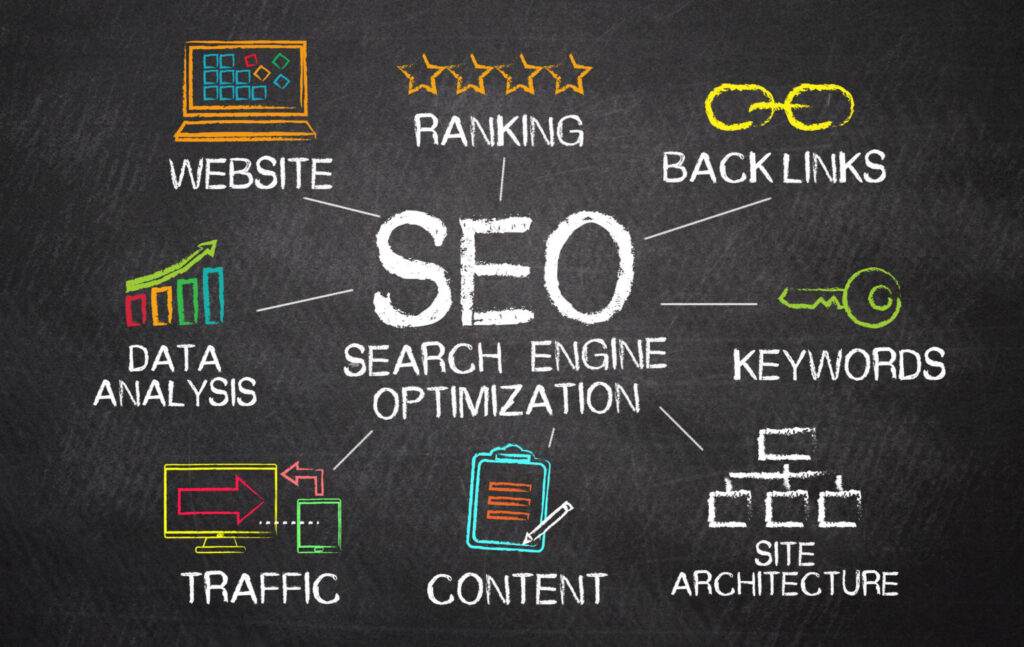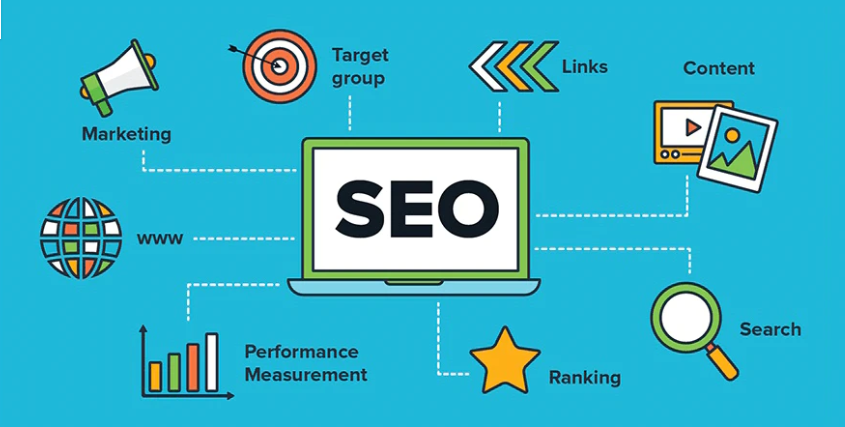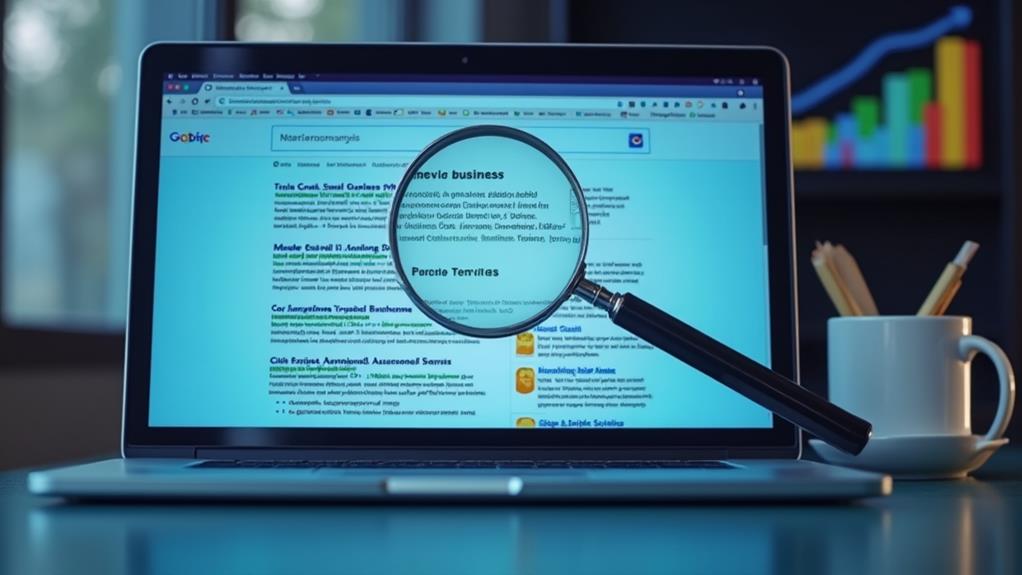You may be surprised to learn that over 75% of users never scroll past the first page of search engine results, making it crucial for small business websites to rank high. By implementing the right SEO strategies, you can increase your website’s visibility and drive more traffic. But where do you start? Developing a solid SEO plan requires a combination of keyword research, on-page optimization, and quality backlink building. Understanding these essential strategies is key to boosting your website’s credibility and search engine rankings – but what are these strategies for SEO for Small Business Websites, and how can you effectively put them into action?
Key Takeaways
- Conduct thorough keyword research to identify relevant, low-competition keywords and create targeted content.
- Optimize on-page elements like meta descriptions, title tags, and header tags for better search engine visibility.
- Create high-quality, linkable assets like informative blog posts or videos to attract authoritative backlinks.
- Use content clustering to group related keywords and create a comprehensive content strategy.
- Analyze competitors’ websites to identify gaps in the market and develop a unique SEO strategy.
Keyword Research and Planning

When it comes to optimizing your small business website for search engines, you’ll frequently hear about the importance of keyword research.
Identifying the right keywords is crucial, as it helps you understand what your target audience is searching for and how to create content that resonates with them.
To start, focus on long-tail keywords that have lower competition and higher conversion rates.
Analyze your competitors’ websites to see what keywords they’re targeting and identify gaps in the market.
Content clustering is another essential aspect of keyword research.
By grouping related keywords together, you can create a comprehensive content strategy that targets multiple keywords at once.
This approach also helps you create more in-depth content that covers a specific topic thoroughly.
Understanding search intent is also vital, as it helps you create content that matches the user’s query.
There are three main types of search intent: informational, navigational, and transactional.
On-Page Optimization Techniques
Now that you’ve identified your target keywords and developed a content strategy, it’s time to focus on fine-tuning your website’s on-page elements to improve search engine rankings and user experience.
On-page optimization techniques play a crucial role in enhancing your website’s visibility and credibility.
To optimize your website’s on-page elements, start by conducting content audits to assess the quality, relevance, and accuracy of your content.
This process helps you identify and eliminate redundant, outdated, or low-quality content that may be hindering your search engine rankings.
Next, optimize your meta descriptions, which provide a concise summary of your webpage’s content.
Craft unique, descriptive, and keyword-rich meta descriptions that entice users to click through to your webpage.
Additionally, ensure that your webpage’s title tags, headings, and subheadings are optimized with your target keywords.
Use header tags (H1, H2, H3, etc.) to structure your content and make it more readable.
Optimize your image alt tags and file names with descriptive keywords, and use internal linking to help search engines understand your website’s structure.
Building Quality Backlinks
Building quality backlinks is a crucial step in enhancing your website’s authority and search engine rankings.
You’ll want to focus on acquiring high-quality links from authoritative sources that are relevant to your niche. To do this, create linkable assets such as informative blog posts, infographics, or videos that provide value to your audience.
These assets should be optimized with relevant keywords and meta descriptions to increase their visibility.
Reach out to other websites and offer to replace broken links with working ones that point to your linkable assets. This tactic, known as broken link building, can help you acquire high-quality links while also providing value to the websites you’re reaching out to.
When building backlinks, prioritize quality over quantity. One high-quality link from an authoritative source can be more valuable than multiple low-quality links from unknown sources.
Use tools like Ahrefs or Moz to track your backlinks and identify opportunities for improvement.
FAQs: SEO for Small Business Websites

How Often Should I Update My Website’s Content for Better Seo?
You should update your website’s content regularly for better SEO, focusing on refreshing evergreen content while incorporating new, fresh perspectives to signal content freshness and relevance to search engines, ideally every 4-6 weeks.
Can SEO Strategies Be Applied to E-Commerce Websites With Many Products?
You’re a needle in a haystack with an e-commerce site full of products – to stand out, apply SEO strategies like product filtering and category optimization to streamline user experience and boost search engine rankings.
What Is the Ideal Website Loading Speed for SEO Purposes?
You aim for a site speed under 3 seconds, as it directly impacts user experience and SEO rankings. Faster load times increase engagement and conversions, while slower sites lead to higher bounce rates and lower rankings.
How Do SEO Strategies Differ for Local Businesses Versus Global Businesses?
When optimizing for local or global audiences, you’ll notice a difference. Local businesses focus on geographic segmentation and local targeting, using location-specific keywords, while global businesses prioritize broader, language-based targeting and international SEO strategies.
Are SEO Strategies Also Effective for Mobile Applications?
Are you reaching for app success? Mobile optimization is key to boost app visibility. You’ll need to adapt SEO strategies, focusing on in-app searches, app store optimization, and user experience to increase your mobile app’s discoverability and downloads.
Conclusion
You’ve reached the SEO tipping point – will you let your small business website fall behind or rise to the top? By implementing these three essential SEO strategies, you’ll be well on your way to outshining the competition. Remember, effective keyword research, on-page optimization, and quality backlinks are the keys to unlocking your online potential. Don’t let your website gather dust – unlock its full potential and watch your business thrive.
